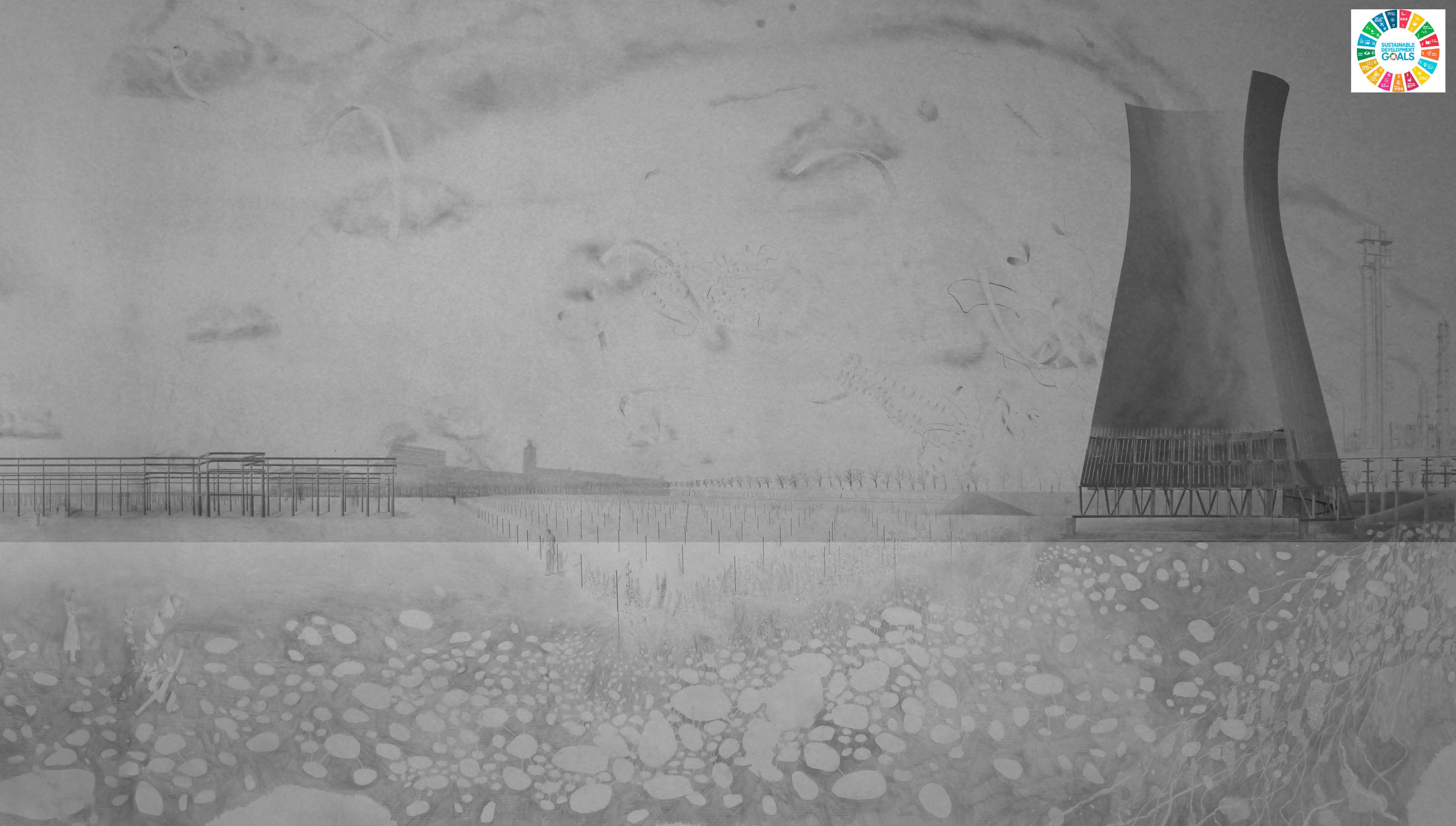
Brave New Substrate
Graduation project
Amsterdam Academy of Architecture
Teaching staff.
Supervisor: Nikol Dietz, Rob Hootsmans, Erick de Lyon, Riëtte Bosch
Students.
Authors: David Habets
Brave New Substrate – is a research-by-design project investigating the biochemical future of the functioning industrial area ‘De Maurits’ in the South of the Netherlands. Over the course of history, the coal mine has transformed into a petrochemical complex that is now on the eve of the ‘biotech revolution’. Since 2008, building has taken place on the ‘Brightlands’ campus around the central laboratory (1920). The spatial interests of the campus are at odds with the spatial consequence of the petrochemical industry. Explosion circles and group risks delineate the area; it is increasingly becoming an introverted and closed site. This is paradoxically opposed to the desire for ‘open innovation’ that is underlined by the multi-million investments from Europe. In what ways can architecture contribute to the development of radical new industries at the beginning of our ‘biochemical’ Anthropocene?
Brave New Substrate – explores three landscape experiments, a sulphate warehouse, abandoned mine shafts and the functioning cooling tower as substrates to new biochemical experiments. Experiments from the laboratory will therefore be tested in the industrial site to form three radical aesthetic and spatial experiences. Hot water from the cooling tower, polluted water from the mine shafts and plastic mountains in the sulphate warehouse will form a new habitat for the isolated microbal life from the lab. The extremophiles: Ideonella
Sakaiensis, Methanopyrus kandleri and generalist physcomitrella patens normally grown in isolated cultures form new symbiotic relations on the industrial site. Industrial heritage and processes will be the substrate on which a ‘chemistry of the future’ can come to life. Knowledge development will be made perceivable to the region in a radical new way. By fostering curiosity and fascinations among the ‘laypersons’ and ‘the experts’ of the campus. Through their new aesthetics the landscape experiments give form to the ongoing debate about the role and impact of new industry in the 21st century.
